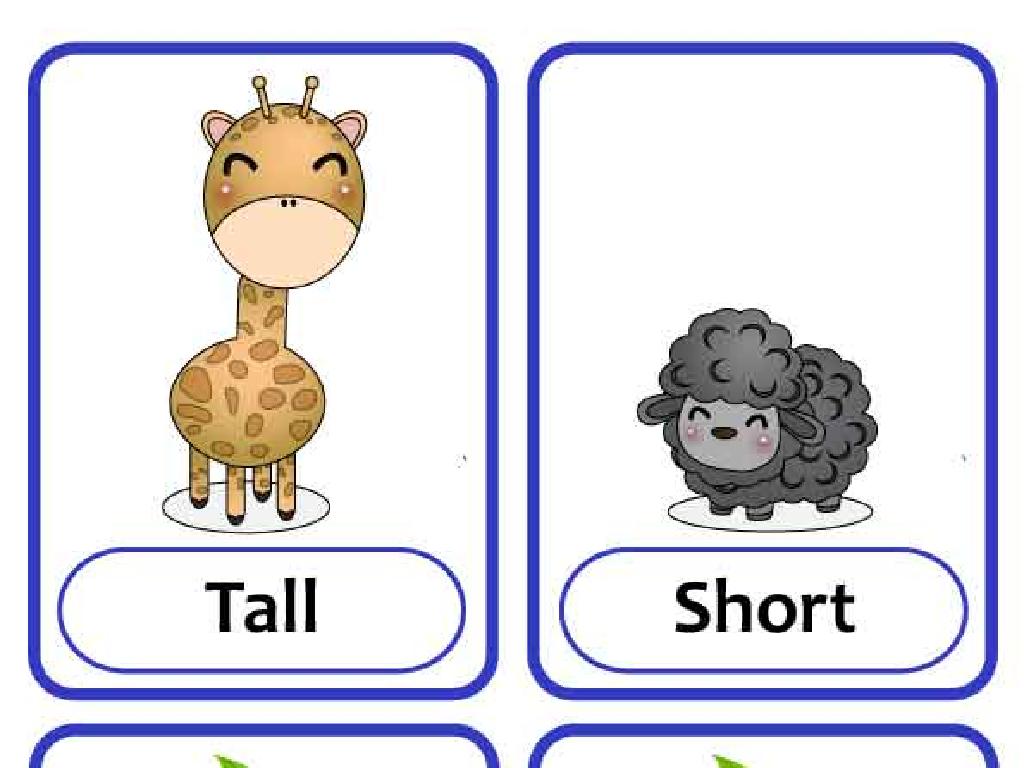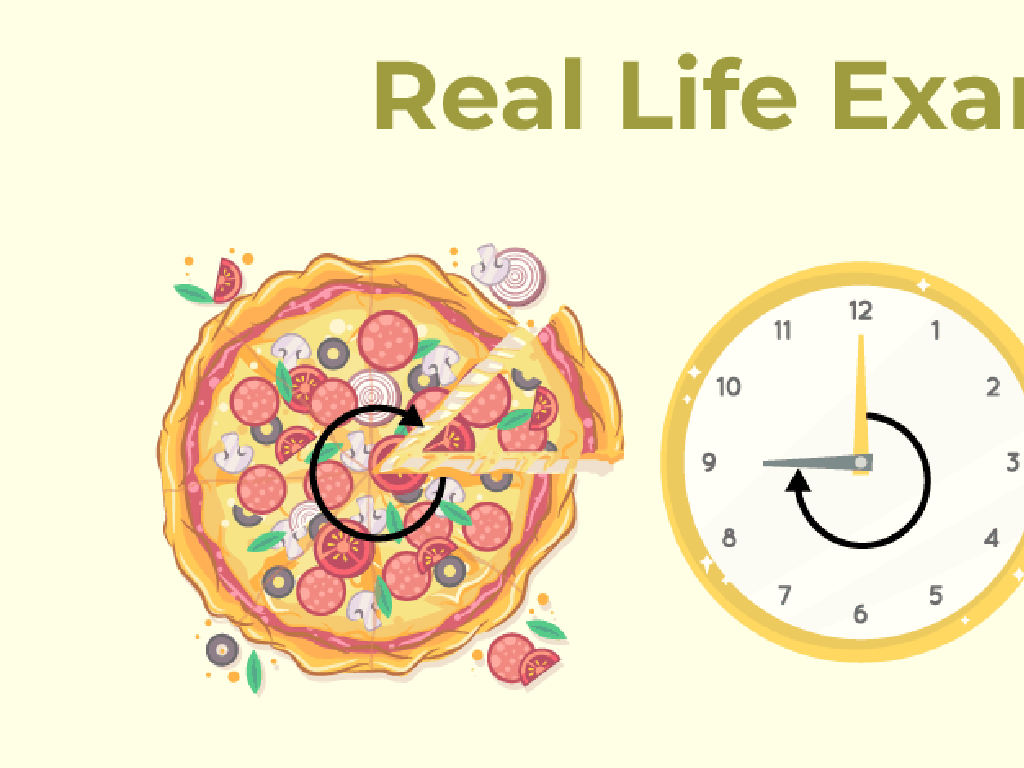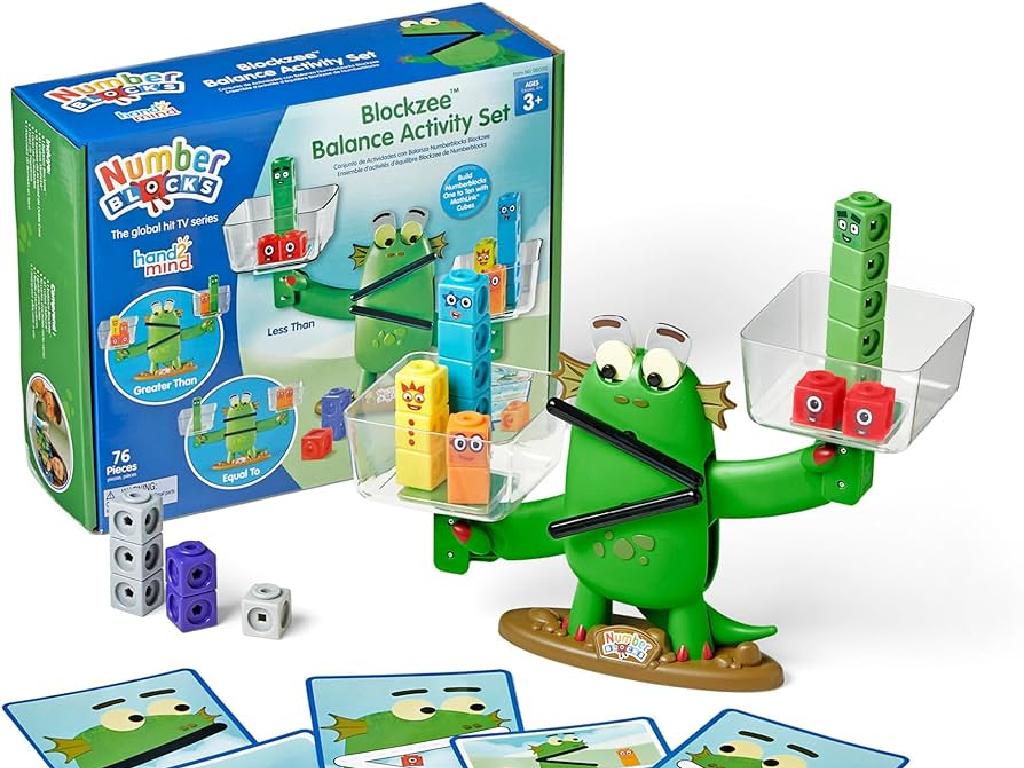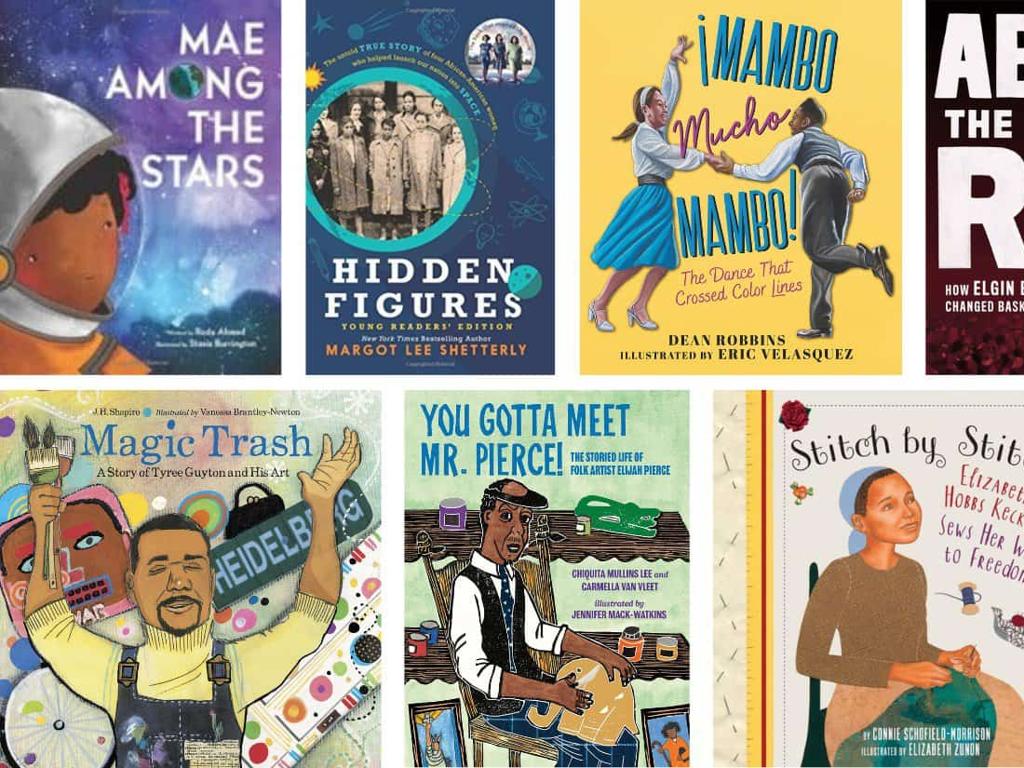Measure Height With Cubes
Subject: Math
Grade: Kindergarten
Topic: Measurement
Please LOG IN to download the presentation. Access is available to registered users only.
View More Content
Welcome to Measurement: Measuring Height with Cubes!
– Today’s topic: Measuring height
– We use cubes for measuring
– Cubes are like building blocks
– Measuring shows tall or short
– Height is how tall something is
– Let’s measure things around us!
– We can measure toys, books, and more
|
This slide introduces the concept of measurement to Kindergarten students using a fun and tangible method cubes. Start by explaining what measurement is and why it’s important. Show them the cubes and explain that these will be their tools for measuring objects. Emphasize that measuring can help us compare the height of different objects to see which is taller or shorter. Encourage the children to think about items they could measure in the classroom. The activity will involve hands-on practice where students will use the cubes to measure various objects, helping them to grasp the concept of height and measurement in a concrete way.
Understanding Height with Cubes
– What is height?
– Height is how tall someone or something is.
– Measuring with cubes
– Use cubes to measure how tall things are.
– Comparing heights
– Stack cubes next to items to see which is taller.
– Tall vs. short
– Some things are taller and some are shorter.
|
This slide introduces the concept of height to Kindergarten students, explaining that height is a measurement of how tall someone or something is. It also introduces cubes as a tool for measuring height, which is a hands-on and visual method suitable for young learners. Encourage the students to practice measuring items with cubes and to compare the height of different objects by stacking cubes next to them. This will help them understand the concept of tall and short in a concrete way. Prepare to have various objects available for the students to measure during the next class, and consider grouping them so they can work in teams to measure and compare different items.
Let’s Practice Measuring with Cubes!
– Stack cubes to measure height
– We’ll use cubes to see how tall things are.
– Cubes are all the same size
– Since every cube is equal, counting is simple!
– Count cubes to find height
– How many cubes tall is your pencil? Your book?
– Compare heights of objects
– Which is taller? Use cubes to find out!
|
This slide is designed for a hands-on activity where Kindergarten students will learn to measure objects using stackable cubes. The cubes being uniform in size makes it easier for the children to understand the concept of measurement and counting. Encourage the students to stack the cubes next to various objects to measure their height. Then, have them count the number of cubes used and compare the heights of different objects. This activity will help develop their spatial awareness, counting skills, and ability to compare sizes. Make sure to walk around the classroom to assist and ensure that each student is correctly stacking and counting the cubes.
Measuring with Cubes
– Find an object to measure
– Stack cubes next to the object
– Make sure to align the cubes carefully
– Count the cubes’ height
– Each cube is equal to one unit of measure
– Record the number of cubes
|
This slide introduces the concept of measurement to Kindergarten students using a hands-on activity with cubes. Start by explaining that measuring is a way to find out how tall or long something is. Demonstrate how to select an object and place it on a flat surface. Show them how to stack the cubes one on top of the other without gaps or overlaps, right next to the object. Guide them to count each cube as they stack, emphasizing that each cube represents one unit of measure. Encourage them to write down or remember the number of cubes used. This activity will help develop their counting skills and understanding of measurement. Prepare to assist students who may have difficulty stacking or counting, and ensure that each student has enough cubes for the activity.
Example Time: Measuring with Cubes!
– Measure teddy bear with cubes
– Use cubes to see how tall the teddy is
– Teddy is 5 cubes tall!
– Find taller or shorter items
– Look around to see if you can find something bigger or smaller than the teddy
– Compare heights with teddy
– How do other items stack up next to our 5-cube-tall teddy?
|
This slide is an interactive example to help students understand the concept of measurement using a familiar object, a teddy bear. Demonstrate how to align cubes from the bottom to the top of the teddy bear without gaps to measure its height. Emphasize that the teddy bear is as tall as 5 stacked cubes. Then, encourage students to find objects in the classroom that are taller or shorter than the teddy bear and measure them using cubes. This activity will help students grasp the idea of comparing heights and lengths, and using a uniform unit (the cube) for measurement. It’s a hands-on approach that will engage the students and make the concept of measurement tangible.
Class Activity: Measure and Compare!
– Pair up with a classmate
– Measure 3 classroom objects
– Count the cubes for each object
– How many cubes did it take to match the height?
– Share your findings with the class
|
This activity is designed to give students hands-on experience with measurement using non-standard units, in this case, cubes. Have the children pair up to foster teamwork. They should choose three objects in the classroom that they can easily access and measure. Encourage them to carefully stack the cubes from the base to the top of each object without gaps or overlaps. After measuring, they should count the cubes used and record their findings. Conclude the activity with a sharing session where each pair discusses how many cubes tall each object was. This will help them understand that different objects have different heights and that they can compare these measurements. For the teacher: Prepare a variety of cubes and objects of different heights. Ensure safety as children move around the classroom. Have a discussion about the importance of accurate measuring and fair comparison.
Measuring Mastery with Cubes!
– Celebrating our measuring skills
– Understanding tall and short
– Comparing objects: which is taller or shorter?
– Cubes measure more than height
– Try measuring toys, books, or snacks with cubes
– Keep practicing at home!
|
Well done to all the students for learning how to measure with cubes! It’s important to recognize that measuring is a way to find out the difference in height between objects, helping us understand concepts like tall and short. Encourage the children to remember that cubes are not just for measuring height; they can be used to measure the length or width of various items. Suggest to parents to continue this practice at home, using cubes to measure toys, books, or even snacks, reinforcing the concept in a fun and interactive way.
Let’s Review: Measuring Height with Cubes!
– Recap: What is height?
– Height is how tall something is.
– Measuring height using cubes
– Stack cubes to see how tall things are.
– Comparing objects with teddy bear
– Which toy was bigger than our teddy?
– Sharing our findings
|
This slide aims to consolidate the day’s learning about measurement, specifically measuring height with cubes. Start by asking the children what they remember about height. Then, review the process of using cubes to measure height by stacking them next to an object and counting. Next, engage the children by asking them to recall objects they measured that were taller than the teddy bear, reinforcing the concept of comparison. Finally, encourage the children to share their findings with the class, fostering a collaborative learning environment. This activity not only teaches measurement but also helps develop their memory and public speaking skills.
Fun Measuring Game: Guess My Height!
– Let’s play a height guessing game
– Guess how many cubes tall I am
– Closest guess wins a prize
– A shiny sticker for the winner!
– Everyone gets a turn to guess
– We’ll count the cubes together.
|
This slide introduces a fun and interactive game to conclude the lesson on measuring height with cubes. The game is designed to reinforce the concept of measurement and provide a practical application of what they’ve learned. Encourage each student to make a guess to promote participation. After everyone has guessed, demonstrate how to measure your height with the cubes, allowing the students to visualize and understand the process. Count the cubes out loud together to involve the class and build anticipation. Award the sticker to the student with the closest guess, and praise all students for their participation to foster a positive learning environment.






